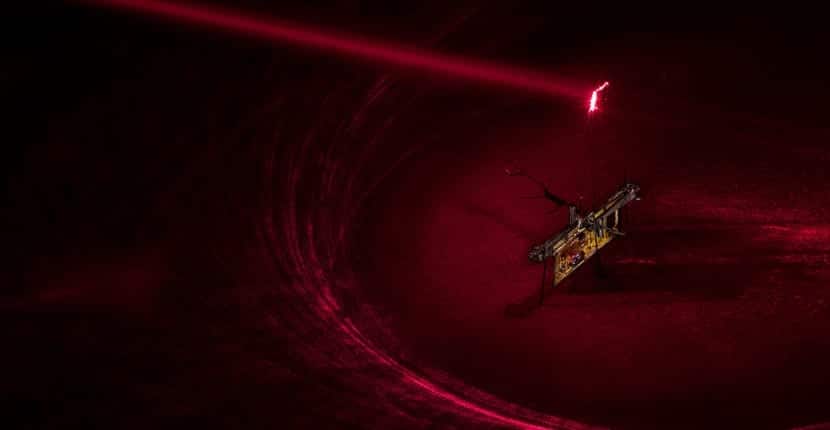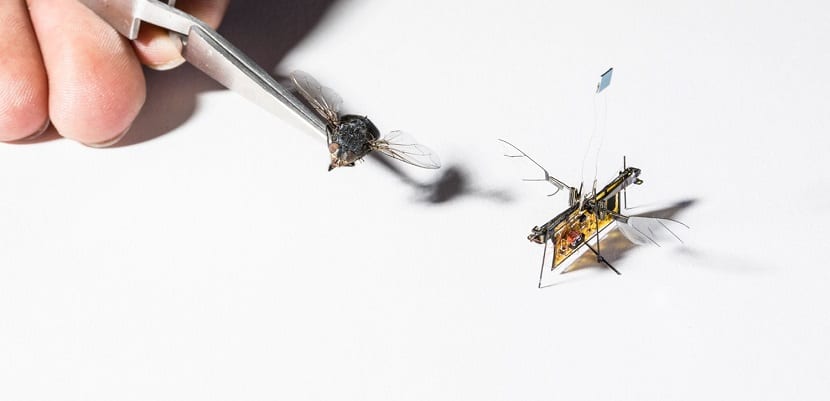
To this day, one cannot think of any electronic item, such as a smart watch, a smartphone, a laptop ... that may be able to function when disconnected from an electrical outlet without having to be designed to house inside a battery. Imagine creating a robot capable of moving without using a power cable or any type of battery.
This is precisely the problem that all the developments related to the world of robotics have today and that is, if we want to do without the power cable, we must design our project taking into account the type of battery that we are going to use and about all the volume that it occupies. This means that today we cannot design very small robots, at least until now since in the University of Washington they seem to have found an interesting solution to this problem.
Engineers from the University of Washington present RoboFly, a robot insect capable of flying without the need for a battery or power cord
As you can see in the images that are scattered throughout this entry, a team of engineers from the University of Washington has been working for many months on the development and manufacture of a robotic insect capable of flying without requiring any type of battery that provides electrical power. This robot, as revealed by the team itself, has been christened RoboFly.
The use of a battery in a robot like this was one of the main problems the team had to face. Think that we are talking about a structure with a weight of little more than one gram where the weight of the battery was, literally, a insurmountable obstacle because his weight prevented him from flying. Due to this and in the tests carried out on prototypes prior to this one bet on the use of a cable for its power, it seems that in this latest iteration RoboFly can move without the need for this cable or any type of battery.

RoboFly can move thanks to the use of a photovoltaic cell that receives energy through a laser light
As announced in the paper published by the team of researchers in charge of developing the project, in order to make the robot work without the need for a power cable or a battery, the structure of the insect has been equipped with a photovoltaic cell that serves as an antenna and receives a directed beam of 'Laser light', which is finally transformed into electricity. This small electrical current goes from 7 V to 240 V thanks to a tiny internal transformer, enough energy to be able to generate the desired movement.
The main drawback of the prototype at the moment is that the laser does not have a tracking system for the insect, which means that when it begins to beat its wings and soars, it stops receiving energy and lands again. At the moment the engineers are already working on a platform that is capable of ensuring that the laser points at all times to the insect's photovoltaic cell in real time.

We are facing a new technology that can represent a great advance in the world of consumer electronics
Undoubtedly, a new and interesting technology has been developed, if we take into account that precisely the biggest limitation that these types of projects of such small size have today is the use of heavy batteries that, as we said, literally them prevents flying and, without the use of these, at least until now, there was no source of energy that would allow them to do so.
At the moment and as I was saying, we only have a new prototype, a rather peculiar design in which many technology companies have already been interested since it can be a great advance in many other fields where it is expected to be able to apply all the technology developed and its methodology of use in a reasonable time.
The third day I saw the episode of Black Mirror in which the bees appeared and this post has reminded me of that.